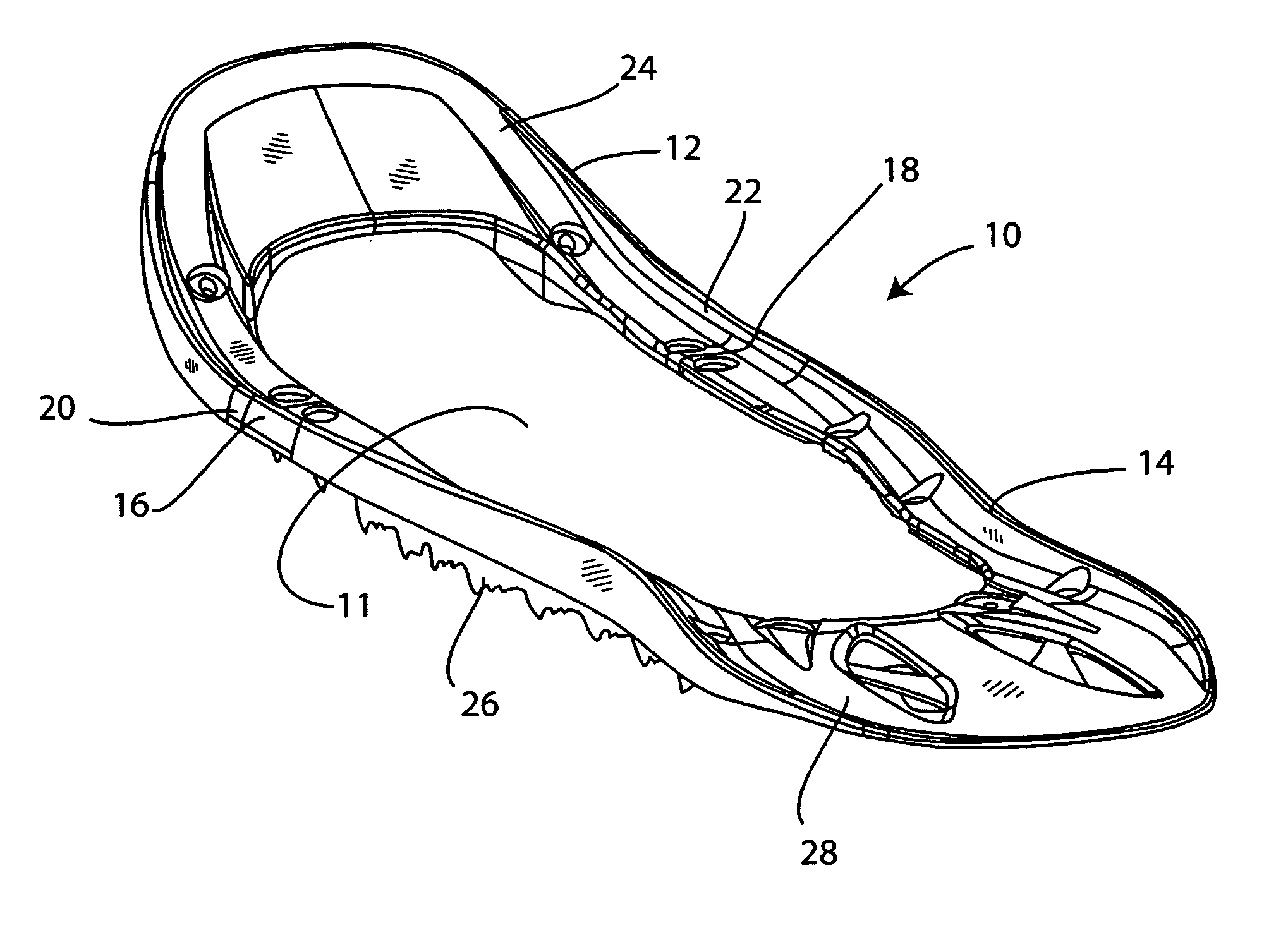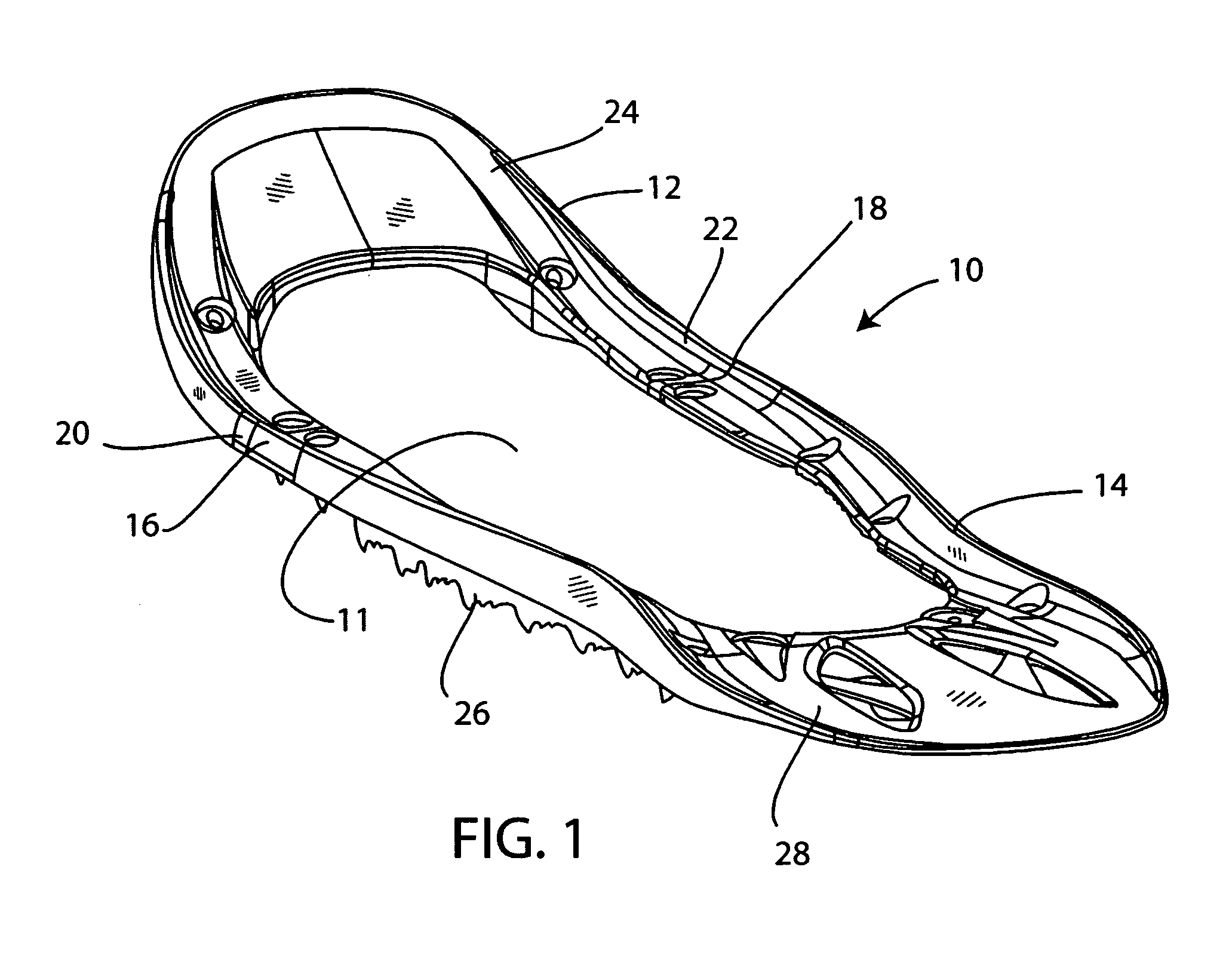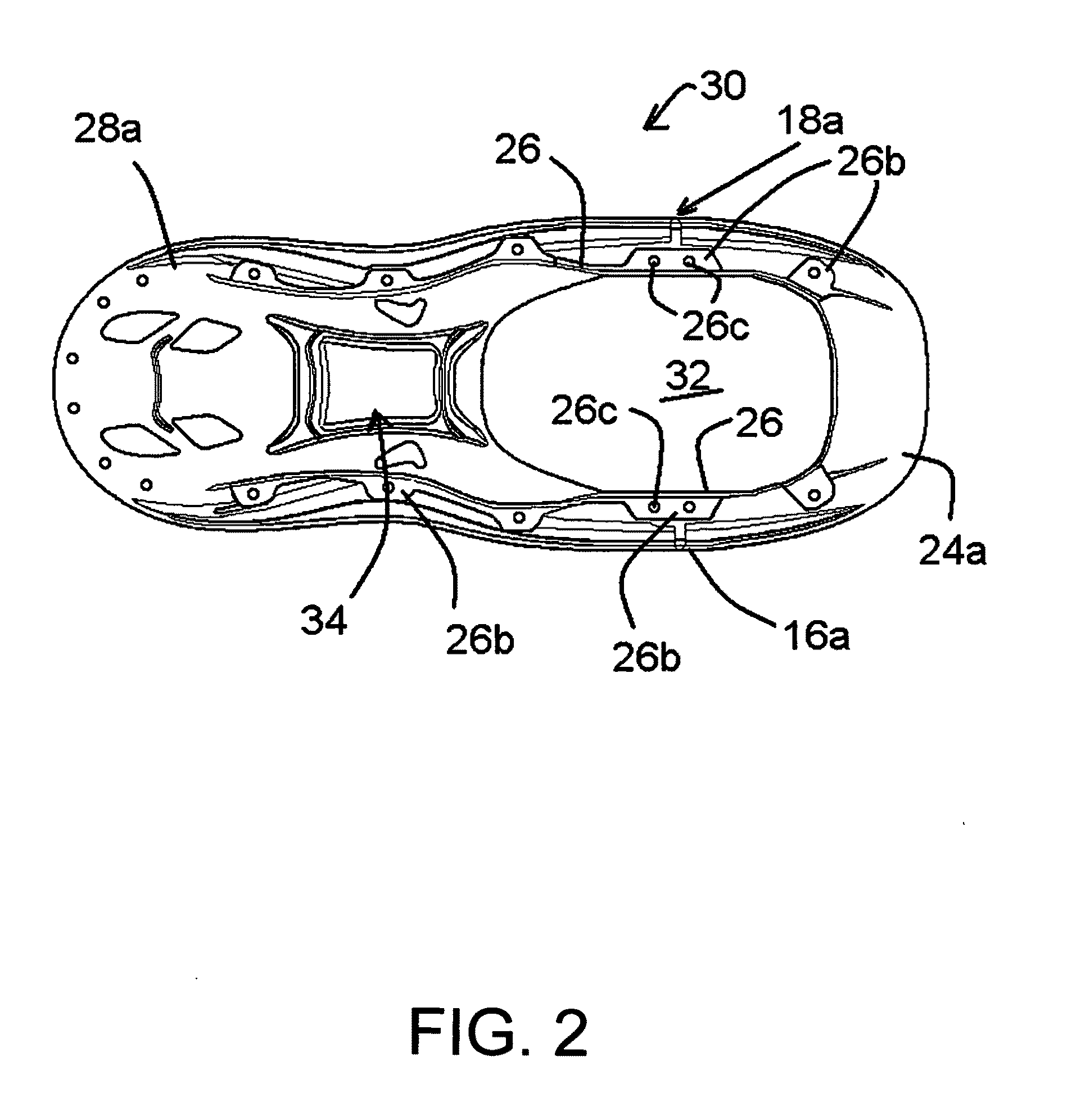Molded snowshoe with compound deck
- Summary
- Abstract
- Description
- Claims
- Application Information
AI Technical Summary
Benefits of technology
Problems solved by technology
Method used
Image
Examples
Embodiment Construction
[0029]FIG. 1 shows a snowshoe body 10 of the invention, in one preferred form. The snowshoe body 10 is molded of plastic material, preferably injection molded of an uncrosslinked polymer such as polypropylene, nylon or urethane. The plastic may be without reinforcing fibers, or it can be reinforced if desired. A compression molded thermoset resin reinforced with fibers such as glass could be used.
[0030]In this form of the invention the snowshoe body has a large central opening 11 for a crampon / boot binding assembly, in this case a boot binding that includes a heel support area (as opposed to snowshoes that allow the boot heel to rest on a rear deck area, such as in FIG. 2). As seen in the drawing, the snowshoe body has a fore section or fore deck 12 and an aft section or aft deck 14, these being secured together at a joint comprised of left and right junctures or joints 16 and 18 in narrow outer rim regions 20 and 22 of the snowshoe body structure. At each joint connection 16, 18 th...
PUM
 Login to View More
Login to View More Abstract
Description
Claims
Application Information
 Login to View More
Login to View More - R&D
- Intellectual Property
- Life Sciences
- Materials
- Tech Scout
- Unparalleled Data Quality
- Higher Quality Content
- 60% Fewer Hallucinations
Browse by: Latest US Patents, China's latest patents, Technical Efficacy Thesaurus, Application Domain, Technology Topic, Popular Technical Reports.
© 2025 PatSnap. All rights reserved.Legal|Privacy policy|Modern Slavery Act Transparency Statement|Sitemap|About US| Contact US: help@patsnap.com



